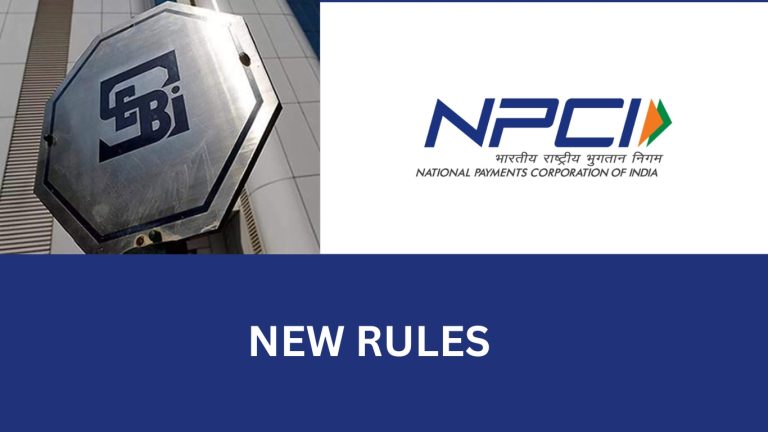SEBI’s New ‘Risk Disclosure’ for F&O Traders: A Transparent Step Towards Investor Protection
Customer protection and risk disclosure have always been buzzwords for the government. When things need to be taken to the next level, there is a need for careful planning and execution.
In recent years, the Securities and Exchange Board of India (SEBI) has been tirelessly working towards safeguarding the interests of investors and traders. This has earned it a strong reputation as a guardian of rights and human interests.
With a focus on curbing fraudulent activities and promoting transparency in the financial markets, SEBI has introduced several regulatory measures. One of its latest initiatives is the implementation of a new “Risk Disclosure” for traders involved in Futures and Options (F&O) trading.
This blog will give you more clarity on this as you explore SEBI’s rationale behind this move. We hope it helps you analyze the implications it holds for F&O traders.
Promoting Awareness of Risks
SEBI’s new “Risk Disclosure” is a proactive step aimed at educating F&O traders about the potential risks associated with derivative markets. Previously, risk disclosures were often limited to paperwork, forms, and websites.
However, SEBI’s latest directive mandates brokers to display this disclosure prominently. This needs to be disclosed within the trading terminal itself, ensuring that traders are confronted with the risks every time they log in.
It is almost like printing that smoking causes cancer on the cigarette packet itself. If the customer still buys it, it is after considering the consequences and deciding for themselves. The basic information and all other details are shared upfront for complete transparency.
A Startling Revelation
What makes this risk disclosure particularly intriguing is that it is based on a recent study conducted by SEBI. This study came out revealing that a staggering 90% of derivative traders end up losing money in the market.
Gone are the days of generic risk warnings; SEBI’s disclosure cuts straight to the chase. It explicitly informs traders about the statistical likelihood of financial loss. On average, traders lose approximately INR 50,000 per year, although this figure may be even higher.
This was presented in a completely factual manner without any intention to scare people away. SEBI continues to encourage investors to plan and invest carefully. But these numbers and implications cannot be ignored.
The New Risk Disclosure: An Inevitable Reminder
SEBI’s risk disclosure will appear as a pop-up notification upon every single login. It will aim to provide a constant reminder to traders about the inherent risks involved in F&O trading.
Whether a trader engages solely in equity trading or actively participates in the derivatives segment, risk disclosure will be mandatory. This will give them the complete big picture even before they take the first step forward.
However, if a stockbroker does not provide online services, the display of this disclosure is not obligatory. This might provide some consequences which will be discussed later.
Enhanced Visibility for Maximum Impact
To ensure maximum visibility and effectiveness, SEBI has stipulated that the risk disclosure should occupy at least 50% of the screen space. This requirement sets it apart from the average disclosures typically found in papers and advertisements.
Remember the mutual fund investment disclosures? The ones where you are informed of their market risks and the need to read scheme-related documents carefully? The ads feature them in font sizes that are often barely legible.
This move is not permitted in this case. By emphasizing the importance of visibility, SEBI is making a bold move. It aims to ensure that traders cannot overlook or dismiss the risks associated with F&O trading.
Implementation and Impact
SEBI’s directive regarding the new risk disclosure is set to come into effect from July 1, 2023. This move has generated a mixed response from market participants.
Advocates of the initiative appreciate SEBI’s commitment to investor protection and believe that it will serve as a wake-up call for traders, encouraging them to approach F&O trading with a more cautious mindset.
On the other hand, critics argue that the risk disclosure may deter potential traders from participating in the F&O market altogether. They contend that a constant reminder of the risks could discourage individuals from exploring this investment avenue.
It is capable of potentially stifling market growth and liquidity in the long run. Furthermore, some critics question whether SEBI’s disclosure accurately represents the risks faced by F&O traders, suggesting that the average loss figure may be higher than stated.
Conclusion
SEBI’s introduction of a new “Risk Disclosure” for F&O traders demonstrates the regulator’s ongoing efforts to enhance transparency and investor protection in the Indian financial markets.
By prominently displaying risk warnings within trading terminals, SEBI seeks to inform traders about the high probability of financial losses associated with derivative trading.
While the impact of this new disclosure remains to be seen, its implementation reflects SEBI’s commitment to ensuring that investors are well-informed. Let’s hope for citizens that are better equipped to navigate the complexities of F&O trading.




